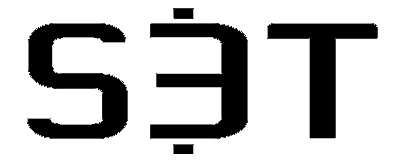🎓S3T Change Leadership Learning Series

📖 Exclusive Academic Access Edition: Learn 21st century leadership skills set in the context of emerging tech and the evolving economy. This is an unusual blend of skills, not usually taught together, but critical for the global and local challenges we face today.
The S3T Change Leadership Learning Series will get you started on a lifelong journey of change leadership, by taking you through 3 tiers of learning,
- 101: Start with the basics of change leadership
- 201: Learn to apply change leadership skills at personal, org and macro levels
- 301: Learn advanced skills for dealing with specific challenges in large regulated industries or other complex scenarios.
The levels are described in more detail below.
Change Leadership 101
- What and Why (2 learning segments)
- The Change Leader mindset (4 learning segments)
Change Leadership 201
- Activating Change Leadership on a Personal Level (4 learning segments)
- Activating Change Leadership at the Organizational Level (4 learning segments)
- Activating Change Leadership at the Industry or Macro Level (4 learning segments)
Change Leadership 301
- Learn to navigate and resolve special challenges encountered in complex change leadership scenarios. (5 learning segments)
Learning Options
Move through this material at the pace that allow you to absorb the key lessons, put them into practice and improve your consistency.
Your options for getting the most from this learning opportunity:
- Option 1 (Best Option): Take 1 lesson a week. At this rate you can go through the entire sequence in 6 months.
- Option 2: Skim, then settle into the specific lessons that you want to learn more about.
- Option 3: Use as a reference. Keep these handy so you can refer to them based on situations you face.
Change Leadership 101: Basics & Mindset
Basics: What & Why
- Why Change Leadership is the most important skill of the 21st Century - change leadership is a set of skills that traditionally has been thought of (and taught) as separate disciplines. Learning and leveraging these skills together is the only way to meet the challenges of the 21st century.
- Defining Change Leadership - Change leadership is a way of seeing, working, mobilizing and navigating. How change leadership skills enable these new ways of driving intentional beneficial change.
Change Leadership Mindset
- Change Leadership mindset: contentment - Counterintuitive reasons why contentment is key to success.
- Change Leadership mindset: the open palm - Driving change incurs risk; learning when to persist vs when to pivot, and being able to pivot gracefully from one chapter to the next.
- Change Leadership mindset: life as a tapestry - Embracing the multi-threaded nature of life is especially vital for change leaders who must often juggle responsibilities for today's operations, while designing and building the capabilities of tomorrow.
- The abundant mindset vs the scarcity mindset: Scarcity always loses, and makes everyone else lose too. An abundance mindset enables more effective solutions to the complex challenges of the 21st century.
Change Leadership 201: Learning and applying change leadership skills on personal, organizational and macro levels
It's useful to think of change leadership as a set of skills that need to be activated on 3 levels: Personal, Organizational, and Macro. As you move to larger contexts, the challenges increase.
201A: Activating Change Leadership on a Personal Level
- Making time - Leading change takes extra time - here's a proven way to maximize what you can do with your available time.
- Layers of work - Instead of seeing life as a futile quest for focus time, Layers gives you a proven way to orchestrate your focus more effectively.
- 5 Building blocks for good planning habits - How to build daily, weekly, and monthly planning habits that take you toward your goals.
- Taking care of yourself and others - Leading change is not easy. Establishing self-care as a norm both at the personal and team level is crucial.
201B: Activating Change Leadership at the Organizational Level
- Know talent vs go talent - harnessing the 2 kinds of talent needed to successfully drive change.
- Resolving conflict - a framework of 6 proven ways to resolve most conflicts including conflicts involving resistance to change.
- Evenly distributed accountability - Innovation and transformation initiatives are often challenged by uneven accountability: one part of the team feels a high degree of ownership and accountability, but must rely on other teams that seem to not.
- How to cultivate an ownership mindset in vendors and partners - Change Leaders gain an edge by cultivating an ownership mindset in the vendors and partners they work with.
201C: Activating Change Leadership at the Industry or Macro Level
- Building and sustaining effective coalitions - Large-scale changes usually cannot be achieved by a single person or group. They usually require the combined resources and support of a coalition of multiple groups.
- 4 Phases of risk & reward for emerging tech - Effective change leaders understand (and leverage) the 4 phase process of how "the New & Unfamiliar" becomes "Accepted & Familiar" over time.
- Implementation paths and the evolution of governance - Governance (the way nations and industries implement and enforce policies) is evolving. This evolution gives change leaders new options.
- The upside of wicked problems - The 21st century has an epidemic of "wicked problems." What approaches offer the best chances of resolving or containing them?
Change Leadership 301: Special Challenges
- How to overcome the bias toward short-term thinking and inspire effective forward-thinking - Learn how to address the 3 most costly misperceptions about future planning and leverage 8 powerful habits for creating a proactive culture in your organization.
- Harmonize different kinds of expertise to achieve success. Today's change leadership opportunities require multidisciplinary collaboration: getting very smart people with divergent sets of expertise from different organizations to work together as one team toward the desired outcome.
- The power of narratives, and how to change them: You personally have a set of internal narratives that guide your snap judgments and reactions. Your organization or industry likewise has conventional wisdom and status quo thinking. How to identify, challenge and change these narratives.
- Identifying economic mental models and their flaws: Financial decisions can sometimes be driven by assumptions (economic mental models) that cause undesirable outcomes. How to address cases where individuals or companies are resisting necessary change, or opposing their stated mission under the guise of financial necessity.
- Gaining buy-in for data modernization: Some of the world's most transformative AI use cases are waiting for data that is currently locked up inside legacy platforms and policies. But data modernizations are fraught with complexity, costs, and perhaps worst of all politics. How to inspire and guide an organization to leave behind its status quo and embark on a data modernization journey.
